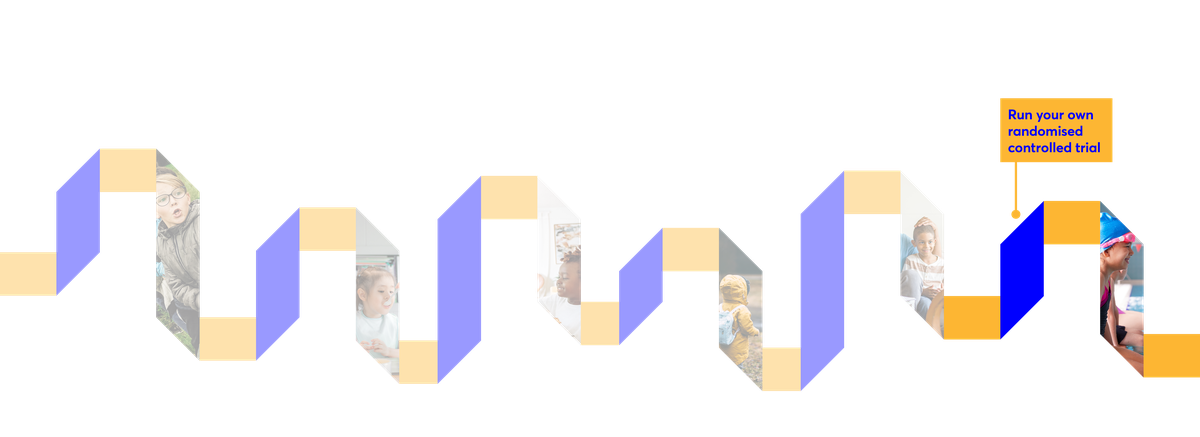How to run your own RCT
Printable version
Browse sections
Early Years Toolkit
Applying behavioural insights to childcare take-up
The EAST™ framework
Make it Easy
Make it Attractive
Make it Social
Make it Timely
A background to behavioural insights
Why experiment?
How to run your own RCT
Data protection and ethics
Step one: decide what outcome measure you are going to use
Step two: make sure your experiment has statistical power
Step three: randomise your participants
Step four: implement the new process for the intervention group
Step five: clean and merge your data
Step six: understand how to analyse your results
Step seven: apply your results and scale
Once you have identified a policy you want to test and decided who you want to test it with, there are 7 main steps to running a trial. This section goes through each of these steps in turn. Download the accompanying resources and work through them as you go.
- Step 1: decide what outcome measure you are going to use
- Step 2: make sure your experiment has statistical power
- Step 3: randomise your participants
- Step 4: implement the new process for the intervention group
- Step 5: clean and merge your data
- Step 6: understand how to analyse your results
- Step 7: apply your results and scale
Resources to run your own RCT
- Randomisation guides (Excel randomisation guide, Word randomisation guide)
- Data cleaning and merging guides (Excel data guide, Word data guide)
- Analysis guides (Excel analysis guide, Word analysis guide)

Image Description
Authors

Louise Bazalgette
Louise Bazalgette
Deputy director, fairer start mission
Louise works as part of a multi-disciplinary innovation team focused on narrowing the outcome gap for disadvantaged children.
View profile
Dave Wilson
Dave Wilson
Advisor
Dave is an Advisor in the Education team at the Behavioural Insights Team (BIT) with a focus on early years projects.
View profile
Fionnuala O’Reilly
Fionnuala O’Reilly
Lead Behavioural Scientist, fairer start mission
Fionnuala was the lead behavioural scientist in the fairer start mission, seconded from the Behavioural Insights Team (BIT).
View profile